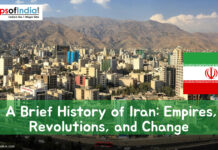Literature
Literature is a collection of writings regarded as works of art. It includes positions such as novels, plays, and poetry, both fiction and nonfiction, that have a long-term impact. It’s also known as the written records of a specific language or people. It defines a wide range of creative, technical, and scientific works. Plays, poetry, short stories, and songs are examples of fictional literature. Biographies, autobiographies, essays, newspapers, journals, and diaries are nonfictional literature examples. In India, the four Dravidian languages had established their literature. Tamil, Telugu, Malayalam, and Kannada are the Dravidian languages.
Here is a list of South India’s literature:
- Tamil Literature
The Sangam literature was formed in Tamil, the oldest of these languages. The oldest literature in Tamil is Sangama literature. Tamil emerged as a written language during the Christian era. In the year 600 AD, the Tamil language’s literature was compiled. The kings and chieftains patronised the poets in the assembly who assisted in collecting Sangam literature over three to four centuries. Poets across south India congregated in Madurai for what are known as sangams, and the writing created in these sangams is known as “Sangama literature.” Sangam literature was a collection of poems and melodies written by many poets to honour heroes and heroines. This was a one-of-a-kind and high-quality piece of literature. There were three Sangams held. The first Sangam’s collection of literature was lost. The second Sangam contains over 2000 poems totalling over 30000 lines of poetry.
Two main groups were formed. They were Pathinenkilkanaku and Pathinenmelkanaku. Pathinenmelkanaku encompasses the eight Ettuthogai anthologies and the ten Patthupaatu songs. There are eighteen works regarding ethics and morals in Pathinenkilkanaku. The most well-known of these masterpieces is Tiruvalluvar’s Thirukural. Thirukural is divided into three parts. Epics are discussed in the first portion, polity and administration are discussed in the second section, and love is discussed in the third section. There is also a text called Tholkaapiam, which deals with grammar and poetry, in addition to the Sangam literature. Two renowned epics from the sixth century are Silapathikkaram and Manimegalai. The Bhakti movement is influenced by Tamil devotional poems produced by Alwars and Nayanmaars between the 6th and 12th centuries. Two literary classics were Kambaramayanam and Periya puraanam.
- Telugu Literature
Telugu literature reached its pinnacle during the Vijayanagara period. The court poet Nachana Somanatha wrote Uttaraharivamsam, a literary opus. Amukta Malyada, written by Krishnadevaraya (1509-1529), is an excellent prabandha. The Ashtadiggajas, a collection of eight Telugu masterpieces, were well-known in his court. The greatest among them was Allasani Peddana’s Manucharitram literature. Andhra kavitapitamaha was his name. The following are some of the Telugu authors and their works:
Dhurjati – Kalahasteeswara Mahatmayam and Kalahasteeswara Satakam
Pingali Surana – Raghavapandaviyam and Kalapuranodayam
Ramakrishna – Panduranga Mahatmayam
Ramarajabhushana – Vasucharitram, Narasabhupaliyam and Harishchandra Nalopakhyanam.
Madayagari Mallana – Rajashekharacharitra
Ayyalaraju Ramabhadra – Ramabhyudayam and Sakalakathasara Sangraham.
- Kannada Literature
Apart from Telugu, Vijayanagaras patronised Kannada and Sanskrit writers as well. Many Jain academics contributed to Kannada literature. After the 10th century AD, the Kannada language emerged. Dharmanathapurana by Madhava, Dharma Parikshe by Uritta Vilasa, Kavirajamang by Rashtrakuta king, Nripatunga Amoghavarsha, Adi Purana and Vkramarjiva Vijaya by Pampa, Shanti Purana by Ponna, and Ajitanatha Purano by Ranna are Kannada literatures from this period. Pampa, Ponna, and Ranna were awarded the title of Ratnatraya.
Throughout the 13th century, many literary works were written in Kannada. Harishvara’s Harishchandra Kavya and Somanatha Charita, Bandhuvarma’s Harivamshabhyudaya and Jiva Sambodhana, Rudra Bhata’s Jagannathavijaya, Andayya’s Madana Vijaya, and Mallikarjuna’s Suktisudharnava Narahari wrote the first Rama Katha in Kannada, Tarave Ramayana, which was based on Valmiki’s Ramayana. Sarvajna’s three-lined aphoristic Tripadi compositions are a source of wisdom and ethics. Honnamma was Kannada’s first renowned poetess. Hadibadeya Dharma is a book she wrote (Duty of a Devout Wife).
- Malayalam Literature
The inhabitants speak Malayalam of Kerala and the surrounding territories. Malayalam first appeared in the 11th century AD and later became an autonomous language in the 15th century. Bhasa Kautilya wrote two essential works: a commentary on Arthashastra and Kokasandisan. Rama Panikkar and Ramanuj were two of Kannada literature’s greatest writers. Even though it is a new language, Malayalam has a powerful style of expression. People enjoy writing in their native language. Many newspapers and magazines are published in magazines nowadays.




